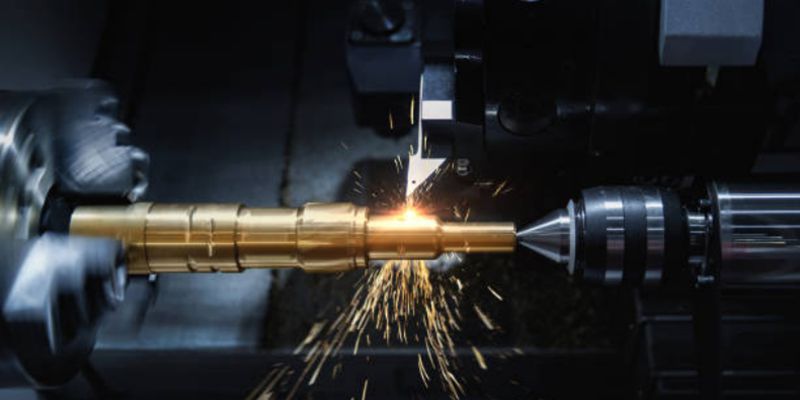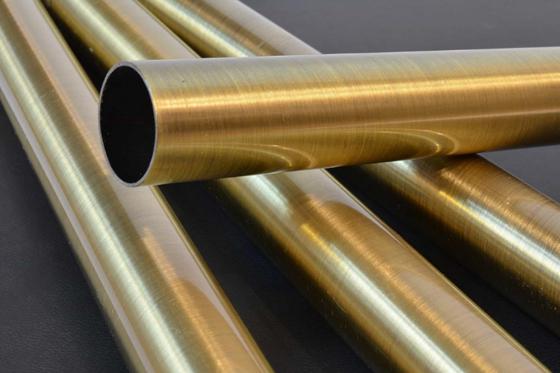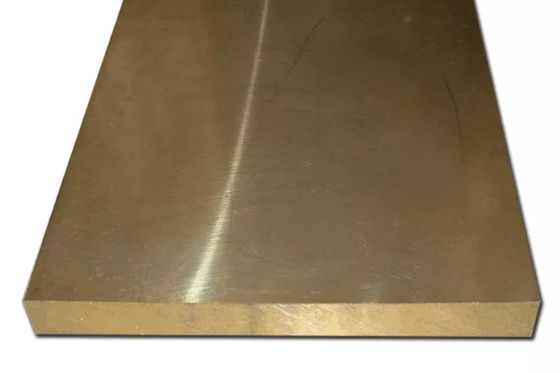- August 2, 2022
Brass is a metal commonly used in various industries due to its various desirable properties. The alloy contains copper, zinc, and other metals such as magnesium, iron, and lead. These metals all contribute to their properties, and, the inclusion of lead makes it very machinable. This is why the metal is quite suitable for brass CNC machining.
In this CNC machining brass guide, we’ll examine the properties of brass and the various brass grades used for custom brass parts. We’ll also review the applications of brass manufacturing and the factors to consider when picking brass for a machining project.
What Properties of Brass Make It Suitable for CNC Machining?
As mentioned earlier, brass majorly contains copper and zinc. It could also contain other metals such as silicon, iron, lead, or magnesium that bestow it with additional properties. However, the catch about brass is that the copper and zinc content can be adjusted to fit any intended application. These varying proportions of brass are what really produce the various grades of brass used in machining custom brass parts.
Let’s review these properties and how they affect brass’s suitability for the CNC machining process:
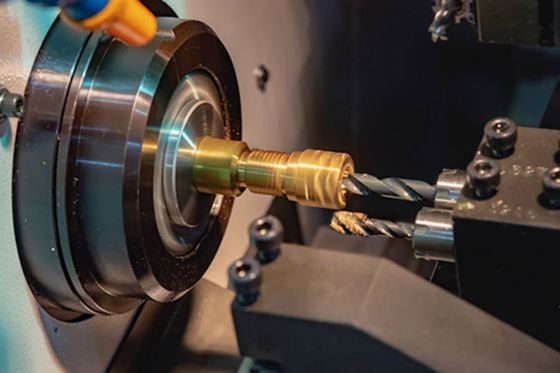
1. Highly Machinable
Brass is one of the easiest metals to machine. This property is due to the presence of lead in its composition. With machining properties like high feed rates, good ductility, and flexibility, machining brass is an easy task for most machinists. The machinability of brass is the major reason brass manufacturing using the CNC process is quite common.
2. Corrosion Resistance
One of the properties which make brass a suitable choice for machining is its corrosion resistance. This property is one of the reasons why tools made out of brass have a long tool life. Also, it makes parts made out of the material suitable for use in liquid environments. However, its corrosion resistance level depends on the number of constituents like iron and aluminum.
3. Malleability
Brass is extremely malleable due to its copper content. However, the metal is even more malleable than copper. Its high malleability makes it an easy choice for machining projects. This is because the machinists can easily manipulate the metal into different shapes. This is why custom brass machined parts.
4. Strength and Hardness
Brass is also renowned for its strength despite its easy machinability. While it is not as strong as steel, it is also quite durable.
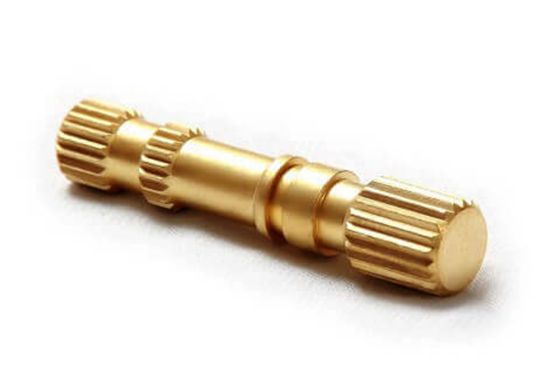
5. Aesthetic Appeal
One of the major factors considered in machining is the aesthetic appeal of the finished part. With its bright golden color, brass definitely has the look to go with its other properties. Its beautiful natural finish means brass machined parts can be used without external finishes.
Types of Brass Grades for CNC Machining
There are different grades of brass which all depend on the constituent of copper and zinc it contains. These variations in composition also affect the properties of applications of various grades of brass. This section will review a few of them alongside their advantages, disadvantages, and applications.
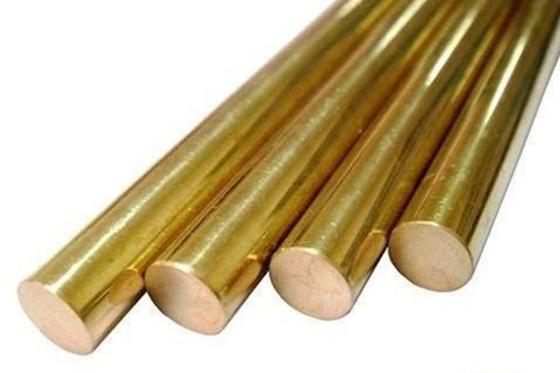
1. Brass C360
Machinists commonly refer to this alloy as free machining brass. It is the most common brass grade used in machining. It is renowned for its high machinability and tensile strength. Its high machinability is attributed to its lead content which makes up about 3% of its constituents. Machinists use it for machining brass custom parts such as electrical equipment and joints or screws.
Advantages
- Easily machinable.
- Corrosion resistance.
- Good tensile strength.
Disadvantages
- Lead content could cause issues if used for medical applications.
- Susceptible to acids.
2. Brass C230
Machinists refer to this grade as the red brass or Nordic brass. It also has moderate strength and good anti-rust properties. The C230 is popular for its season-breaking and dezincification resistance. Manufacturers also use it for making pipe service lines due to its resistance to water corrosion. It is also applicable for custom parts such as rotor bars, j-hose bends, etc.
Advantages
- Resistance to dezincification.
- Moderate tensile strength.
- Resistance to corrosion.
Disadvantages
- It might not withstand corrosion in harsh environments.
3. Brass C220
Machinists refer to this alloy as commercial bronze. Despite the name, its constituent still makes it a brass alloy due to its higher copper content. It has a good machinability rating, strength, and ductility. It is a favorite in the architectural world and is used for machining weather strippings.
Advantages
- Excellent corrosion resistance.
- Good machinability rating.
- Good ductility and strength.
Disadvantages
- Might require extra annealing treatment after exposure to harsh environments.
Finishing Options for CNC Machined Brass
Brass doesn’t have a natural coat of its own. However, its natural golden surface means you can use a brass machined part just as machined. If the part has cosmetic applications, you might want to give it an external finish. Explained below are some compatible finishing options for brass CNC machining:
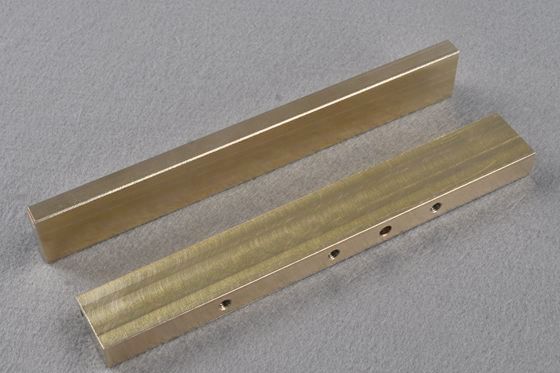
1. As machined
Because brass has a naturally aesthetic surface, some prefer using machined brass parts from the machine. In most cases where this finish is used, the focus is usually on the functionality of the part and not aesthetics. However, such parts could easily get damaged.
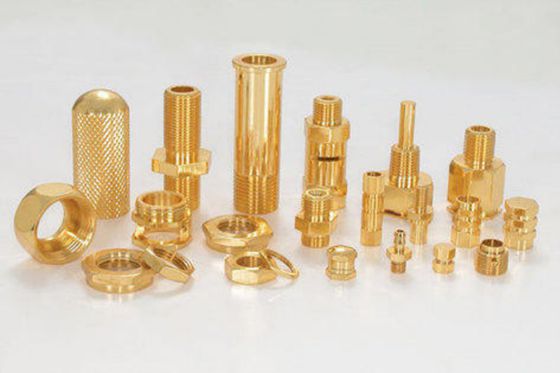
2. Buffing
This involves using a wheel and an abrasive disc to polish the surface of the custom brass part. The abrasives on the disc help remove any impurities, smoothening its surface.
3. Electroplating
This finishing option uses an electrolytic to bind molecules of another metal onto the brass part surface. Examples of metals used include aluminum, stainless steel, etc. Electroplating usually comes out with a glossy or smooth finish.
4. Honing
This finish involves using abrasive stones against the surface of the finished part. And it gives a cross-hatched pattern on the brass part surface.
5. Powder Coating
This finish involves the use of free-flowing dry powder to coat the surface of custom brass parts. The powder coat finish improves the corrosion and wear resistance of the brass metal.
Factors to Consider When Choosing Brass for CNC Machining
Choosing brass for a CNC machining project might be a little trickier than it seems. Since there are various grades of metal, you need to consider which of these grades’ characteristics are a fit for your project. So, it would help if you made a checklist of factors to consider before settling on a particular grade. We’ve shortlisted some factors you can work with below:
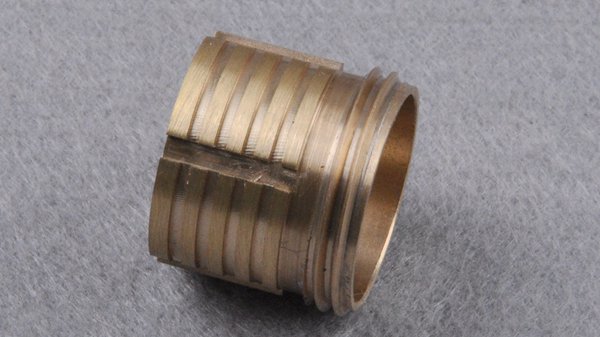
Machining Time Required for the Part
The lead times for various projects differ, which is a huge factor in determining the brass grade to use. In CNC machining brass, the C360 alloy is the best variant in terms of machinability. So, if you need a custom brass part urgently, the C360 is an overwhelming material favorite. However, if you require other properties apart from machinability, you could assess other grades like the C230 or the C220.
Design for Manufacturability
DfM principles are vital in any machining process. Although brass grades are quite easy to machine, you must ensure your parts design is not too complex for machining. Also, it is advisable to minimize the number of machine setups needed. This helps to reduce the machining cost for the project.
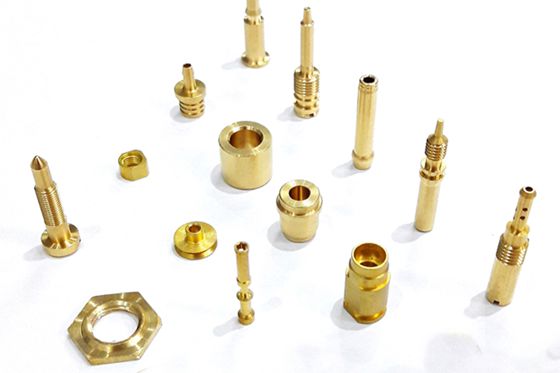
The Application of the Finished Part
The various compositions of the brass grades mean they all have varying strengths and weaknesses. This means where you plan to use the part will affect the brass suitable for the machining project. For example, if the part is meant for underground pipelines, it is better to use the C230 grade.
Applications of Brass Machined Parts
The applications of the CNC brass machining process include the manufacturing of parts such as:
- Hinges
- Knobs
- Plumbings
- Bells
- Jewelry
- Gears
- Door trim, and so on.
How to Know If Brass is the Right Choice for Your CNC Project?
CNC metal machining uses various metals as raw materials for machining. Deciding on brass as the right metal for your CNC project would mean you’d need to make sure the applications of your machined part match the property profile of your brass grade. For example, using the C220 brass grade for underwater pipelines is not advisable.
Make Machined Brass Parts with WayKen
Of course, you could consult an expert’s opinion to ensure you’re doing no wrong. Also, an expert could give you more insightful opinions as to the machining feasibility of your brass project. At WayKen, we have a team of experts that can offer answers to any questions you have about CNC machining, including machining brass.
Our experts have a deep knowledge of the CNC brass machining process. We offer various CNC machining services such as milling, turning, drilling, EDM, etc. In addition, our production processes are also ISO 9001 certified, and you can be assured of the best machined parts every time.
You can contact us by requesting a quote for any brass manufacturing process. One of our project managers will review your application and get a quote and DFM feedback for you within 12 business hours.
FAQ
What is the tolerance range for brass?
The tolerance range for brass can go as low as 0.005 mm.
Is there any disadvantage to brass CNC machining?
While there is no identified disadvantage of the machining process, some of the brass grades have various individual disadvantages. An example is the C360’s susceptibility to acids.
What is the lead time for machining brass?
The lead time for the CNC brass part is usually less than 5 days. But it also depends on the number and complexity of the parts.

